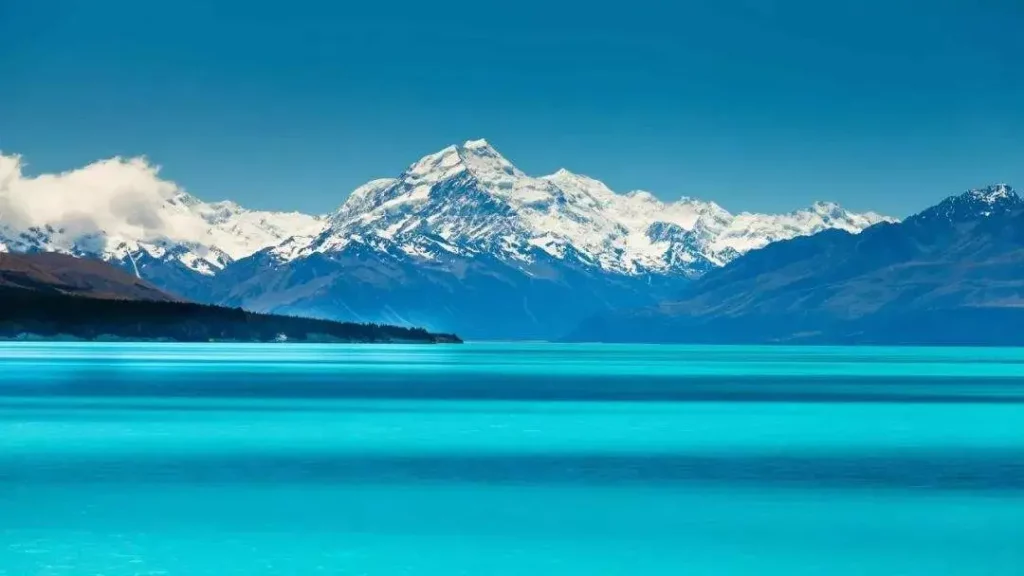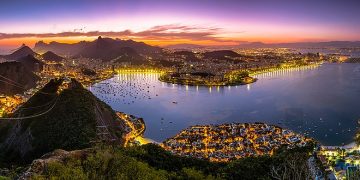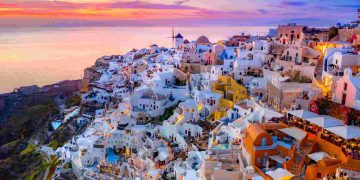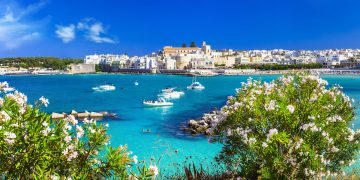New Zealand is renowned for its awe-inspiring natural beauty, which has captivated travelers, photographers, and nature enthusiasts from around the globe. From its pristine lakes to its towering mountains, the country offers a variety of landscapes that are simply unparalleled. If you’ve ever seen a picture of New Zealand’s lakes nestled in dramatic mountain ranges, you’ve likely seen one of the most iconic and stunning natural views on Earth.
So, what makes New Zealand’s lakes and mountains so special, and why are they considered among the most beautiful natural landscapes in the world? In this article, we will explore the key elements that contribute to the unparalleled beauty of New Zealand’s lakes and mountains, highlighting the unique geological, ecological, and cultural factors that make these landscapes truly exceptional.
1. The Geological History That Shaped New Zealand’s Terrain
New Zealand’s geological history plays a pivotal role in creating the stunning lakes and mountains that define its landscape. The country sits on the Pacific Ring of Fire, which means it is prone to volcanic activity and tectonic movements. Over millions of years, these forces have shaped New Zealand into a land of dramatic contrasts, from deep fjords and towering peaks to crystal-clear lakes and lush valleys.
Volcanic Origins:
Many of New Zealand’s mountains and lakes have volcanic origins. The North Island, in particular, is home to several volcanic peaks, such as Mount Ruapehu and Mount Ngauruhoe. These mountains, formed by volcanic eruptions, rise steeply from the surrounding landscape and are often topped with snow or surrounded by volcanic lakes like Lake Taupo—one of the world’s largest volcanic craters.
Tectonic Forces:
The South Island’s Southern Alps are the result of tectonic movements, where the Australian and Pacific plates converge, causing the land to buckle and fold. This collision has given rise to some of the country’s most dramatic mountain ranges, with peaks that soar over 3,000 meters (10,000 feet) into the sky. These mountains are not just visually striking; they also influence the surrounding climate and ecology, creating unique ecosystems at different altitudes.
2. The Stunning Clarity and Color of New Zealand’s Lakes
New Zealand is home to some of the clearest and most vibrant lakes in the world. The country’s lakes are known for their incredible purity and unique colors, ranging from vibrant turquoise to deep sapphire. What makes these lakes so stunning is their pristine condition, largely due to New Zealand’s low levels of pollution and the relative isolation of many of its lakes.
Lake Tekapo:
Located in the South Island, Lake Tekapo is one of the most famous lakes in New Zealand, renowned for its stunning turquoise waters. The lake’s color comes from finely ground particles of rock known as “rock flour,” which are carried into the lake by glacial meltwater. These particles scatter sunlight, creating a striking, almost ethereal blue-green hue. The surrounding mountains, including the Southern Alps, add to the scenic beauty, especially when covered in snow.
Lake Wanaka and Lake Hawea:
Both located in the Otago region of the South Island, these lakes are surrounded by rugged mountains and are known for their crystal-clear waters. Lake Wanaka, in particular, offers a peaceful, picturesque landscape that attracts photographers and nature lovers. The contrasting scenery of clear blue waters against dramatic mountain backdrops makes these lakes iconic spots for travelers.
Lake Pukaki:
Another gem in the South Island, Lake Pukaki, is famous for its brilliant blue color, which is created by the presence of glacial silt in the water. The lake sits at the base of Mount Cook, New Zealand’s highest peak, providing a stunning contrast between the lake’s vibrant hue and the snow-capped mountain. The surreal beauty of this landscape has made it a popular location for filmmakers, and it was even featured in the movie The Lord of the Rings.
3. The Majestic Mountain Ranges
The mountains of New Zealand are as varied as they are awe-inspiring. From the jagged peaks of the Southern Alps to the volcanic summits in the North Island, these mountains create some of the most breathtaking vistas in the world. The mountains not only serve as a visual focal point but also define the country’s climate, wildlife, and outdoor activities.
Southern Alps:
The Southern Alps stretch along the length of the South Island, forming a dramatic spine through the country’s landscape. Home to New Zealand’s highest peak, Mount Cook (Aoraki), the Southern Alps are the centerpiece of many travelers’ New Zealand itineraries. The range features towering peaks, alpine glaciers, and deep valleys, offering some of the best hiking and mountaineering opportunities in the world. The iconic Milford Sound, located within Fiordland National Park, is flanked by the dramatic peaks of the Southern Alps, making it one of the most photographed natural landscapes in New Zealand.
Mount Cook (Aoraki):
Standing at 3,724 meters (12,218 feet), Mount Cook is New Zealand’s tallest mountain and one of the most majestic in the Southern Hemisphere. The mountain’s sharp, snow-covered summit and the surrounding glaciers create a stark contrast with the green valleys below, providing some of the most iconic vistas in New Zealand. Aoraki is a place of spiritual significance for the Māori people, and its rugged beauty continues to draw climbers, photographers, and nature lovers from around the world.
Tongariro National Park and Mount Ruapehu:
Located in the central North Island, Tongariro National Park is home to some of New Zealand’s most active volcanoes. Mount Ruapehu, one of the country’s largest volcanoes, is a popular destination for winter sports enthusiasts due to its ski fields, while its rugged slopes and craters provide stunning views year-round. The park’s landscape, featuring volcanic plateaus, alpine meadows, and emerald lakes, makes it a UNESCO World Heritage Site and a must-see for visitors interested in exploring New Zealand’s volcanic wonders.

4. The Unique Climate and Weather Patterns
New Zealand’s diverse climate and weather patterns are another contributing factor to the dramatic beauty of its lakes and mountains. The country’s temperate climate and proximity to the ocean create varied weather conditions, from the wet and cool climate of the west coast to the dry, sunny conditions in the east.
Snow-capped Peaks:
Many of New Zealand’s most iconic mountains, such as Mount Cook and Mount Ruapehu, are often capped with snow, creating stunning vistas, especially during the winter months. The combination of snow-covered peaks and turquoise lakes is one of the country’s most memorable natural features.
Alpine Meadows and Forests:
In addition to snow-covered peaks, the lower regions of New Zealand’s mountains are home to lush alpine meadows, temperate rainforests, and native forests. These areas are particularly stunning in the spring and summer, when vibrant wildflowers bloom, and the forests are alive with birds and wildlife.
5. The Cultural and Spiritual Significance of the Landscape
New Zealand’s lakes and mountains are not only beautiful but also hold great cultural and spiritual significance for the Māori people, the indigenous inhabitants of the country. Many of the country’s most iconic natural sites have deep connections to Māori mythology and history.
Sacred Mountains:
Mount Cook (Aoraki), for example, is considered sacred by the Māori people, and its name, Aoraki, translates to “Cloud Piercer” in Māori. According to Māori legend, Aoraki and his brothers were once gods who became stranded on Earth, and their frozen bodies transformed into the Southern Alps. The cultural significance of the landscape deepens the emotional connection travelers feel when visiting these majestic sites.
Māori Legends and Lake Views:
The Māori have many stories and legends related to New Zealand’s lakes and mountains. For example, the legend of Lake Taupo involves the god of fire, Mahuika, and the powerful volcanic forces that created the lake. These stories enrich the natural beauty of New Zealand’s landscape, offering visitors a deeper understanding of its spiritual and historical significance.
6. A Haven for Outdoor Enthusiasts
The combination of breathtaking scenery and diverse landscapes makes New Zealand an outdoor enthusiast’s paradise. Whether you’re into hiking, skiing, kayaking, or simply sightseeing, the country’s lakes and mountains provide endless opportunities for adventure.
Hiking Trails:
New Zealand offers some of the world’s most famous and accessible hiking trails, such as the Tongariro Alpine Crossing and the Routeburn Track. These trails offer stunning views of the mountains, lakes, and valleys, taking hikers through some of the most remote and untouched areas of the country.
Skiing and Snowboarding:
For those visiting in the winter months, New Zealand’s snow-capped mountains offer top-notch skiing and snowboarding opportunities. Ski fields on Mount Ruapehu and other peaks provide world-class slopes with spectacular mountain backdrops.
Water Activities:
New Zealand’s pristine lakes are perfect for a variety of water activities, including kayaking, fishing, and sailing. The clear, calm waters of lakes like Wanaka, Pukaki, and Te Anau are ideal for exploring by boat, and the surrounding mountains add a sense of tranquility to the experience.
Conclusion: A Landscape Like No Other
New Zealand’s lakes and mountains stand out as some of the most beautiful and unique natural landscapes in the world. From their dramatic geological origins and stunning clarity to the spiritual significance and outdoor adventure opportunities they offer, these landscapes are a testament to the awe-inspiring power of nature.
Whether you’re exploring the turquoise waters of Lake Tekapo, hiking the Southern Alps, or simply taking in the majestic views of Mount Cook, New Zealand’s lakes and mountains promise to leave an indelible mark on anyone who visits. It’s no wonder that they continue to be a source of inspiration and wonder for travelers and locals alike.





















